The Great Depression & WW II
Music
The Great Depression was a time of innovation and change for music in Tennessee. Many people during the 1920s used phonographs to play records.
Several Tennessee artists such as blues singer Bessie Smith of Chattanooga began recording songs in the 1920s. Click here, to read more about Bessie Smith.
Several Tennessee artists such as blues singer Bessie Smith of Chattanooga began recording songs in the 1920s. Click here, to read more about Bessie Smith.
During the 1930s, more and more people listened to music on the radio. This cost less money than buying a phonograph and records.
Through radio broadcasts, people in all parts of the country were connected together—listening to the same songs, news broadcasts or soap operas. Listen to a radio broadcast from CBS in 1938.
Through radio broadcasts, people in all parts of the country were connected together—listening to the same songs, news broadcasts or soap operas. Listen to a radio broadcast from CBS in 1938.
http://tn4me.org/audio/Bob_Hope_Christmas_Show_1938.mp3
Several radio stations became very popular throughout the state. In the Lawrenceburg area, people could listen to WOAN. Many Tennessee cities and towns had radio stations including Nashville’s WSM, Memphis’s WMC, and Knoxville’s WNOX.
Musicians played different styles of music throughout the state. However, during the Great Depression the two most important Tennessee styles for the music business were blues and country music.
The blues music scene centered on Memphis, while country music gradually began to concentrate in Nashville.
W.C. Handy of Memphis was known as the “father of the blues.” In the 1930s, blues singers Lizzy Douglas better known as Memphis Minnie and John Lee "Sonny Boy" Williamson from Jackson recorded national hits. Listen to recordings by Sonny Boy Williamson and by Memphis Minnie below.
W.C. Handy of Memphis was known as the “father of the blues.” In the 1930s, blues singers Lizzy Douglas better known as Memphis Minnie and John Lee "Sonny Boy" Williamson from Jackson recorded national hits. Listen to recordings by Sonny Boy Williamson and by Memphis Minnie below.
Sonny Boy Williamson - Jackson Blues
http://tn4me.org/audio/JacksonBlues.mp3
Memphis Minnie - I Hate To See The Sun Go Down
http://tn4me.org/audio/IHateToSeeTheSunGoDown.mp3
In Nashville, the Grand Ole Opry radio program reached listeners in homes throughout the country. Tennessee singers like Uncle Dave Macon and Roy Acuff became popular throughout the United States. Listen to recordings by Uncle Dave Macon and Roy Acuff below.
Uncle Dave Macon, "Down and Out Blues"
http://tn4me.org/audio/Down_and_Out_Blues.mp3
Roy Acuff, "The Wabash Cannonball"
http://tn4me.org/audio/TheWabashCannonball.mp3
Picture Credits:
- Photograph of Uncle Dave Macon with his banjo.
- A photograph of country music singer Roy Acuff and his band, probably taken in the 1930s. Acuff had his two biggest hits, “Wabash Cannonball” and “Great Speckled Bird,” in the 1930s. Courtesy of the Grand Old Opry Archives
- Photograph of W.C. Handy at the piano in 1944. The photograph is signed by Handy on the front and was given to Robert Church. University of Memphis Special Collections. Volunteer Voices, Digital Library, University of Tennessee Knoxville
- Photograph of Bessie Smith by Carl Van Vechten, taken in 1936. Library of Congress
- Photograph of couples dancing the jitterbug in a Memphis club in 1939. The jitterbug was a type of fast dance popular in this time period. Photographed by Marion Post Wolcott, a photographer hired by New Deal programs. Library of Congress
- Photograph of two musicians playing music while sitting on the side of a street in Maynardville, Tennessee, in 1935. Photographed by Ben Shahn. Library of Congress
- Photograph of three men playing musical instruments including a banjo, fiddle, and guitar. The caption reads "A Gatlinburg mountain band," and is dated April 22, 1939. The photograph is part of the Tennessee Department of Conservation Photograph Collection, 1937-1976 at the Tennessee Library and Archives. This image is copyrighted by the Library and can not be reproduced without their permission.
- Cover of a cd on Memphis Minnie's works, produced in 1991 by RST Records. This is the fourth of five cds. The date of the recordings is from June 23, 1938 to February 6, 1939. Tennessee State Museum Collection
Acknowledgments:
- "All in Down and Out Blues" sung by Uncle Dave Macon. Recorded August, 1937. Public Domain. Uncle Dave was the Grand Ole Opry's first major star. The songwriter, who is not known, writes about losing all his money in the stockmarket crash. He now has no hope for anything better. "I've lost all my money, and now I have flopped. It's hard times, pity poor boy, It's hard times when you're down and out."
- "I Hate to See the Sun Go Down" sung by Memphis Minnie. Recorded in 1938. From Complete Recorded Works, Vol. 4 (1938-1939)
- "Jackson Blues" sung by Sonny Boy Williamson. From the album Sonny Boy Williamson, Vol. I (1937-1938)
- "The Wabash Cannonball" sung by Roy Acuff. From the album Louisiana Hayride-Classic Gospel Radio, Vol. 2
The Great Depression & WW II >> The Great Depression >> The Arts >> Music
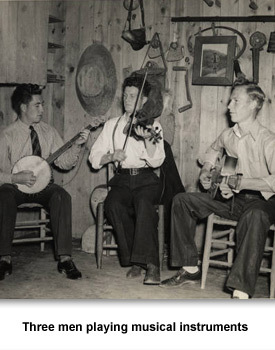
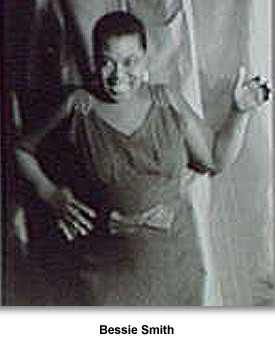
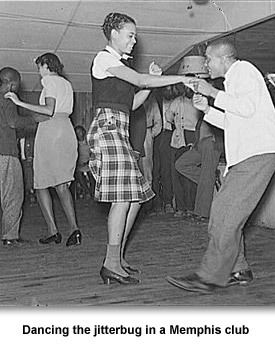
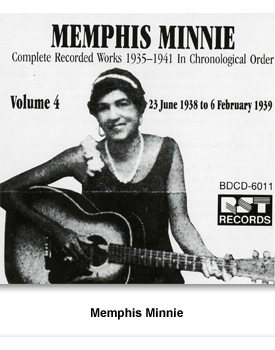
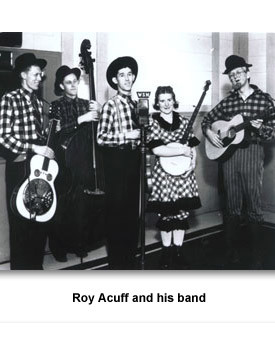
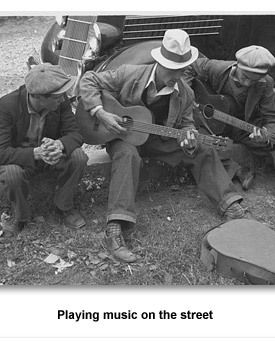
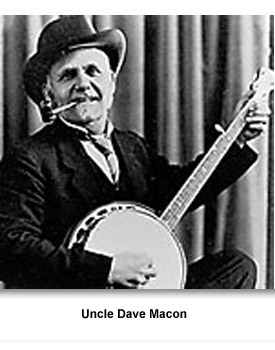
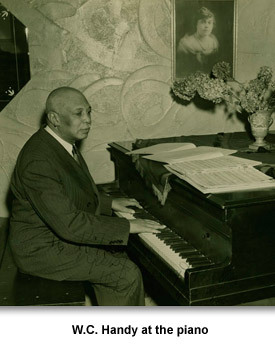
 Sponsored by: National Endowment for the Humanities
Sponsored by: National Endowment for the Humanities